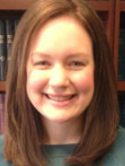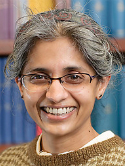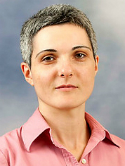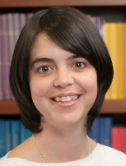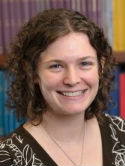Variants in activators and downstream targets of ATM, radiation exposure, and contralateral breast cancer risk in the WECARE study Journal Article
| Authors: | Brooks, J. D.; Teraoka, S. N.; Reiner, A. S.; Satagopan, J. M.; Bernstein, L.; Thomas, D. C.; Capanu, M.; Stovall, M.; Smith, S. A.; Wei, S.; Shore, R. E.; Boice, J. D. Jr; Lynch, C. F.; Mellemkjær, L.; Malone, K. E.; Liang, X.; WECARE Study Collaborative Group; Haile, R. W.; Concannon, P.; Bernstein, J. L. |
| Contributors: | Begg, C.; Orlow, I.; Klein, R.; Offit, K.; Woods, M. |
| Article Title: | Variants in activators and downstream targets of ATM, radiation exposure, and contralateral breast cancer risk in the WECARE study |
| Abstract: | Ionizing radiation (IR) is a breast carcinogen that induces DNA double-strand breaks (DSBs), and variation in genes involved in the DNA DSB response has been implicated in radiation-induced breast cancer. The Women's Environmental, Cancer, and Radiation Epidemiology (WECARE) study is a populationbased study of cases with contralateral breast cancer (CBC) and matched controls with unilateral breast cancer. The location-specific radiation dose received by the contralateral breast was estimated from radiotherapy records and mathematical models. One hundred fifty-two SNPs in six genes (CHEK2, MRE11A, MDC1, NBN, RAD50, TP53BP1) involved in the DNA DSBs response were genotyped. No variants or haplotypes were associated with CBC risk (649 cases and 1,284 controls) and no variants were found to interact with radiation dose. Carriers of a RAD50 haplotype exposed to ≥1 gray (Gy) had an increased risk of CBC compared with unexposed carriers (Rate ratios [RR] = 4.31 [95% confidence intervals [CI] 1.93-9.62]); with an excess relative risk (ERR) per Gy = 2.13 [95% CI 0.61-5.33]). Although the results of this study were largely null, carriers of a haplotype in RAD50 treated with radiation had a greater CBC risk than unexposed carriers. This suggests that carriers of this haplotype may be susceptible to the DNA-damaging effects of radiation therapy associated with radiationinduced breast cancer. © 2011 Wiley Periodicals, Inc. |
| Keywords: | controlled study; middle aged; unclassified drug; major clinical study; single nucleotide polymorphism; mutation; case-control studies; dna-binding proteins; polymorphism, single nucleotide; cancer risk; radiation dose; rad50 protein; dna damage; dna repair; genetic predisposition to disease; breast cancer; radiation; radiotherapy; protein; genotype; haplotypes; risk factors; breast neoplasms; heterozygote; radiation exposure; risk assessment; radiation dosage; mathematical model; haplotype; neoplasms, radiation-induced; dna breaks, double-stranded; dna repair enzymes; checkpoint kinase 2; dna mutational analysis; contralateral breast cancer; polymorphisms; mdc1 protein; mre11a protein; nbn protein; tp53bp1 protein |
| Journal Title: | Human Mutation |
| Volume: | 33 |
| Issue: | 1 |
| ISSN: | 1059-7794 |
| Publisher: | Wiley Liss |
| Date Published: | 2012-01-01 |
| Start Page: | 158 |
| End Page: | 164 |
| Language: | English |
| DOI: | 10.1002/humu.21604 |
| PROVIDER: | scopus |
| PMCID: | PMC3240722 |
| PUBMED: | 21898661 |
| DOI/URL: | |
| Notes: | --- - "Export Date: 2 April 2012" - "CODEN: HUMUE" - "Source: Scopus" |




